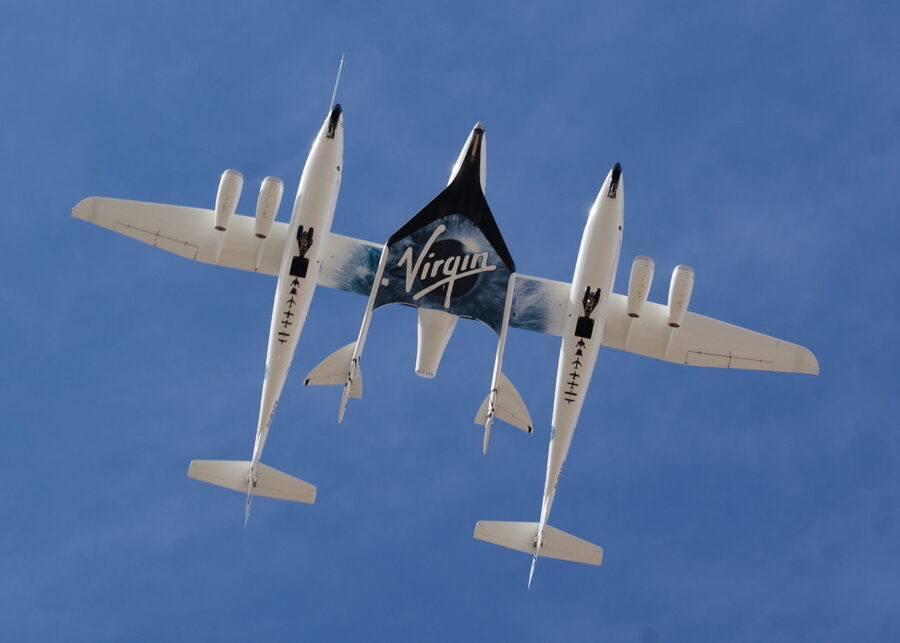Fifty years ago almost to the day, astronaut Neil Armstrong became the first human being to land on the moon. Now, it seems mankind may be ready for its next giant leap. This month, British billionaire Richard Branson’s Virgin Galactic said it would merge with Social Capital Hedosophia, or SCH, in a deal that would give it access to the capital markets and propel its plans to fly people to the edge of space within a year. Virgin Galactic will be the first publicly traded space-tourism company in the world.
The deal puts fuel in the engines of Virgin Galactic to compete in the space travel business with Blue Origin — owned by Amazon founder Jeff Bezos — and SpaceX, founded by Tesla CEO and cofounder Elon Musk. Virgin Galactic is ready to go: Following two successful manned launches earlier this year, the company said in a statement that it has reached an “inflection point” in the development of commercial spaceflight for a safe experience.
Virgin Galactic said it “believes it has overcome a substantial number of the technical hurdles required to make the company a viable and profitable commercial service.” It pointed out that its spaceship, VSS Unity, is the first and only commercial service thus far to have put people in space. The capital provided by SCH will give Virgin Galactic “the support needed to reach commercialization,” the company added.
Virgin Galactic said it already has $80 million in deposits from more than 600 aspiring space travelers in 60 countries for a total of $120 million in potential revenue. Those customers reportedly include pop singer Justin Bieber and actor Leonardo DiCaprio. The company said it intends to offer customers a “unique, multi-day experience” including zero gravity and view of Earth from space. After this year’s launches, about 2,500 people have asked to sign up, Branson told CNBC in an interview.
The competition is not standing still. Blue Origin is planning a crewed space mission in 2019 and seeks to get people to the moon by 2024. Musk wants to take SpaceX to Mars and has set longer-range plans: ferry cargo by 2022 and humans by 2024, build a city in the 2020s and colonize the red planet in the 2030s. SpaceX is already carrying cargo shipments to the International Space Station on its Dragon spacecraft. The space race is on.
A SPAC for Space
The Virgin Galactic-SCH deal is a “merger that suits both parties,” said David Erickson, senior fellow and lecturer in Wharton’s finance department, in an interview on the Knowledge at Wharton radio show on SiriusXM. (Listen to the podcast at the top of this page.) Publicly held SCH has been looking to put its capital to work; Virgin Galactic was counting on a $1 billion investment from Saudi Arabia but suspended the deal after questions arose around the death of journalist and Saudi critic Jamal Khashoggi.
SCH is what’s called a special purpose acquisition company (SPAC) that was formed two years ago with the goal of buying a technology company, said Erickson. It raised $600 million and has about two years to make an acquisition or funds would go back to investors. The idea of SPACs actually has been around for about two decades but has gained popularity in recent years.
Erickson said SPACs typically are started by former CEOs of companies that have been sold, or by former entrepreneurs, who, because of their strong track records, can successfully tap the IPO market even with just broad statements about how they will use the capital they raise. Recently, private equity partners who have left their firms have been starting SPACs instead of raising capital for their own investment funds, he said. This way, they can get a transaction done relatively quickly, although with SPACs they would invest in one company instead of several.
The deal has a pro forma enterprise value of $1.5 billion and represents 2.5 times estimated 2023 revenue or 5.5 times estimated EBITDA (earnings before interest, taxes, depreciation and amortization), according to the company. SCH will take a 49% stake. The Virgin Galactic-SCH merger is expected to close in the second half of the year. After closing, SCH founder and CEO Chamath Palihapitiya plans to invest another $100 million in the company. Palihapitiya will be the chairman while Virgin Galactic CEO George Whitesides will remain in place.
The Virgin Galactic-SCH deal is a “merger that suits both parties.”— David Erickson
Palihapitiya is a Sri Lanka native with a net worth “rumored to be close to $1 billion,” a fortune he amassed as a senior Facebook executive when the company went public, according to Business Insider. His venture capital firm, Social+Capital Partnership, has invested in fast-growth startups such as work collaboration platform Slack; he also is part of a group that owns the NBA team, the Golden State Warriors.
Erickson said SCH’s investment in Virgin Galactic is similar to putting money in “very early stage” and “very speculative biotech companies in which revenue generation is years away.” However, by merging with SCH instead of doing an initial public offering, he said Virgin Galactic can avoid “the scrutiny they would typically face in a two-week IPO road show.”
Space Tourism: Realistic?
“This is literally rocket science,” said Iain Boyd, professor of aerospace engineering at the University of Michigan, on the radio show. “One of the keys [to success is] to demonstrate safety and reliability.” Virgin Galactic has had some flights tests, but it will need several more before it will be “ready to go,” he added. Its safety record was marred by an accident in 2007 that killed three employees of Scaled Composites, which built its spacecraft, and a test flight in 2014 killed a co-pilot and seriously injured the pilot.
Virgin Galactic’s space tourism services work by launching an aircraft up to high altitude, and then firing a rocket until it reaches the edge of space and then glides back to the ground, Boyd said. In a post-crash investigation, Virgin Galactic was “cited for lack of sufficient safeguards in the design of the vehicle and training, and a lack of oversight by the Federal Aviation Authority,” he said. But then again, “space tourism is such a new endeavor” that it takes a while to figure out how things will work, Boyd said.
“This is literally rocket science.” –Iain Boyd
Virgin Galactic said it has been granted its FAA commercial space launch license, and the New Mexico Spaceport has also received its Spaceport license. Boyd said the Commercial Space Act gives the FAA the power to ban “designs and practices shown to be unsafe.” That means if something goes wrong on a flight, it can’t be repeated. This was the same regulatory situation facing early commercial aviation in the 1920s, he said. But in modern times, he is not sure it would be an “acceptable” approach especially as Virgin Galactic and Blue Origin come close to their goals.
If the first few space flights of any of these companies go well, “then people will come,” said Boyd. “But if anything goes wrong, it’s going to be very interesting to see if this kind of market can ride that out.” When commercial jet flights were introduced in the 1950s, “the first jetliners had three crashes back-to-back,” he said. The space tourism industry may find it more difficult than jet liners to bounce back after accidents, “because the margins are tighter and the technology is less advanced.” Space tourism also is “a narrower market” because it attracts vacationers while commercial jet flights are used by business and leisure travelers.
While Virgin Galactic and Blue Origin have different technology approaches — on the latter’s space flight, people will be launched in a rocket up to the edge of space and then come back down in a capsule — “they are neck-and-neck” in the space tourism race, Boyd said. (SpaceX is less into space tourism than the other two.) However, “in the end, it actually doesn’t matter” who succeeds in putting vacationers in space first, he said. “It’s about whether they come back safely or not.”
Image Credit: By Jeff Foust – Flickr: WK2/SS2 from directly below, CC BY 2.0, https://commons.wikimedia.org/w/index.php?curid=14222803



